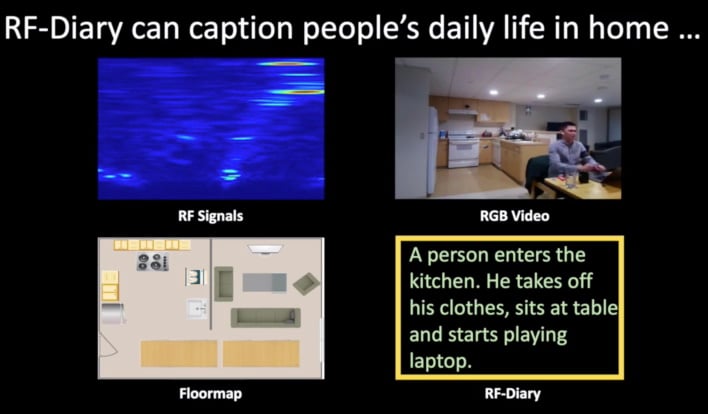MIT's RF-Diary Goes Superman With Tracking Tech That Sees Through Walls And Darkness

Since 2014, the MIT Computer Science and Artificial Intelligence Laboratory (CSAIL) has been working on wireless monitoring technologies. Now, they have paired this technology with artificial intelligence to transcribe what a person is doing in a room accurately.
The team, led by Professor Dina Katabi, has taken their project to a new level: identifying activities. According to their article, “their system can now identify what activity a person is doing, whether that’s sleeping, reading, cooking or watching TV - and all without capturing any sensitive visual data of the activities.” This system, dubbed RF-Diary, paired floor maps and wireless signals to train AI to recognize movements. Once the training was complete, the AI could then identify and report useful data for people and homes it had never seen previously with both the lights on and off. Take a look at the video below to see it in action.
Following their developments, the CSAIL team plans to make this commercial-friendly for use in homes, hospitals, and other healthcare facilities. It can be incredibly useful for monitoring people who have mobility issues or are at potential risk for health issues where supervision would be significant. This development of technology paired with AI is genuinely fascinating and will continue to be updated over time. If you want to read the paper about the project as it stands, you can do so here.

